
Bog Pack & Landowner Coexistence Projects
Vision
Coexistence between wolves and people in shared landscapes with minimal conflict.
Approach
We partnered with Wisconsin landowners convinced that wolves and people can coexist in minimal conflict and thereby restore the health of ecosystems. Our approach is to provide the landowners and public with evidence of coexistence and how it works at a fine spatial and temporal scale.
Background
Just five miles east of the Wisconsin Dells, Pat Clark owns a 605 acre property filled with bog, lake, forest, and abundant native Wisconsin wildlife and vegetation. The property hosts the oldest existing hunting club in Wisconsin, founded in the 1880s by Pat’s great grandfather, Royal F. Clark. A central lake on the property became a popular duck hunting area, eventually leading to the establishment of the Lewiston Outing Club. In November of 2003, Pat Clark heard a wolf howl in his bog for the first time. Trail cams revealed that there was more than one wolf using his property, soon dubbed “The Bog Pack”. Shortly after, Pat began to notice ecological changes in the bog habitat. The once abundant coyote population appeared to dwindle to just a few. Beavers, foxes, mink, and other native Wisconsin small mammals started to reappear. The deer that Pat thought too abundant also began to diminish, and the ratio of buck to does changed from 10:90 to a more stable 50:50. As grazing pressure on plants decreased, rare endangered orchids began to appear. In just ten years, Pat believes the wolf pack had changed the bog ecosystem for the better. In the summer of 2022, three years of abundant rain forced all but three wolves out of the bog area. In the spring of 2023, Pat observed a litter of five pups on his trail cameras. Intrigued by the movements and habitat usage of the slowly regrowing Bog pack, Pat reached out to Dr. Adrian Treves, founder of the Carnivore Coexistence Lab at UW-Madison. Dr. Treves assigned Senior Joey Schwirtz to the project in late July of 2023, officiating the Bog Pack Wolf Project.
The Study Site
The study site is 4.5 square kilometers of tamarack forest and bog habitat. It is jointly owned by Pat Clark, John Weiss,
and the Tamarack Hunting Club. We use Panthera, Reconyx, and Solar Cellular trail cameras to study the wolves within the
site. Although the exact range of the wolves is unknown, we assume that it is much smaller than the average Wisconsin wolf
pack range of 125 - 330 square kilometers due to the farmland surrounding the forested area. Studies done on wolves with
smaller territories are rare, and so this research provides unique and valuable insights into how wolves use their habitats
at a fine scale. By sampling every 2 weeks and placing a large number of cameras in a small area, we hope to systematically
measure the wolves’ use of habitat, their fission-fusion social organization, and detect breeding this summer.
Research Goals
- Provide a model of successful coexistence between wolves and humans to contribute to the ongoing public debate about wolf management in Wisconsin
- Understand how wolves seasonally use different habitats at a small spatial and temporal scale of analysis
People
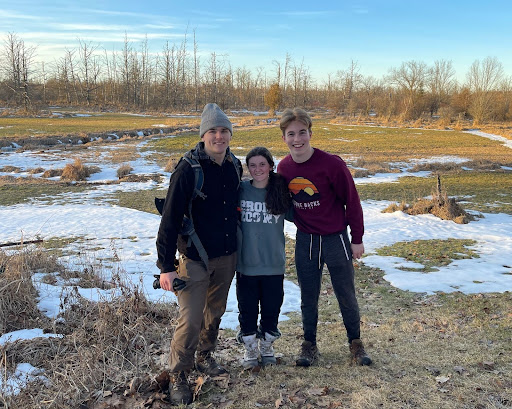
Left to Right:
Joey Schwirtz- First Field Director
Olivia Deering- Current Field Director
Alex Seaborg- Field Research Assistant and co-designer of this webpage
Preliminary Findings

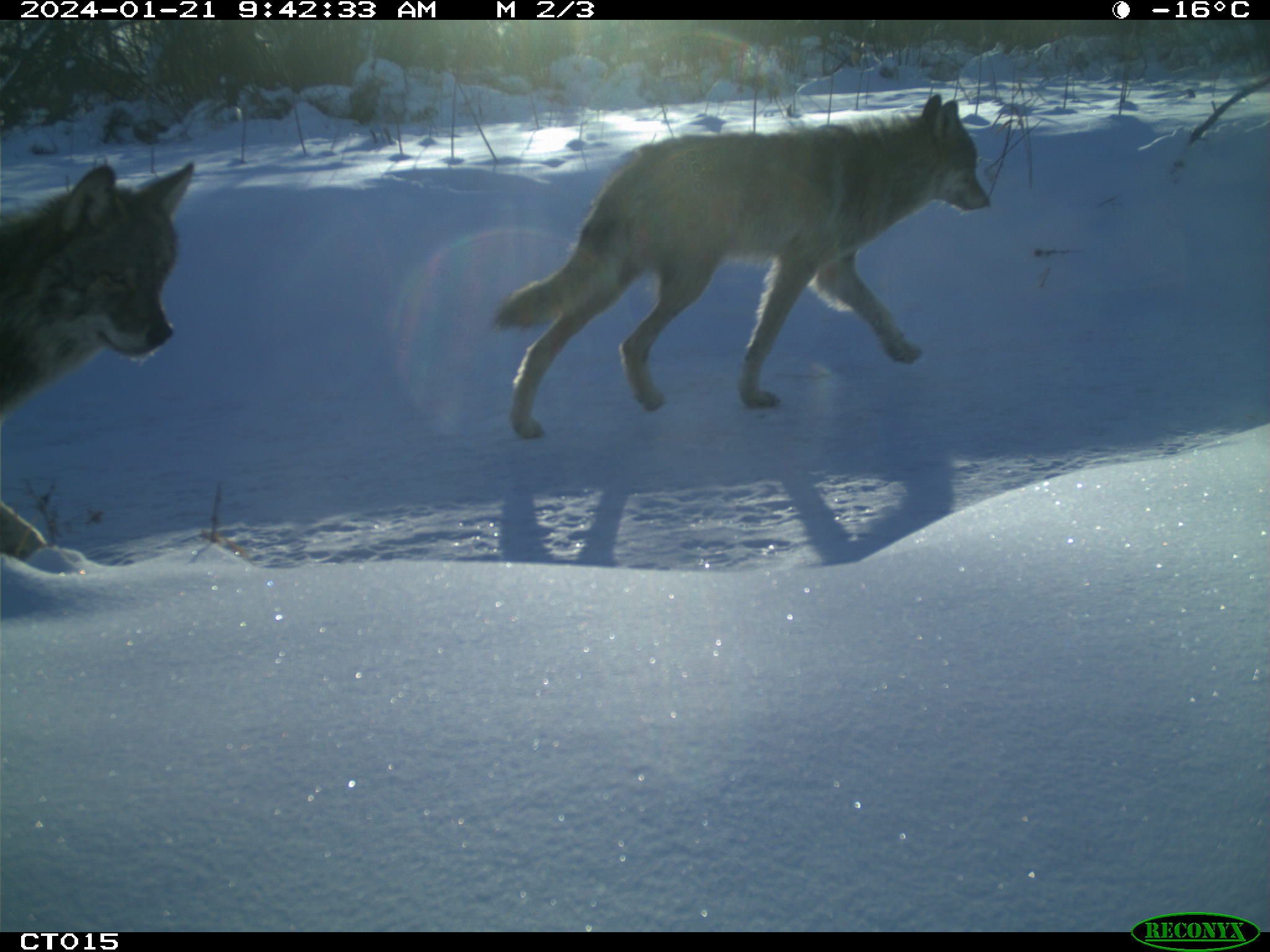
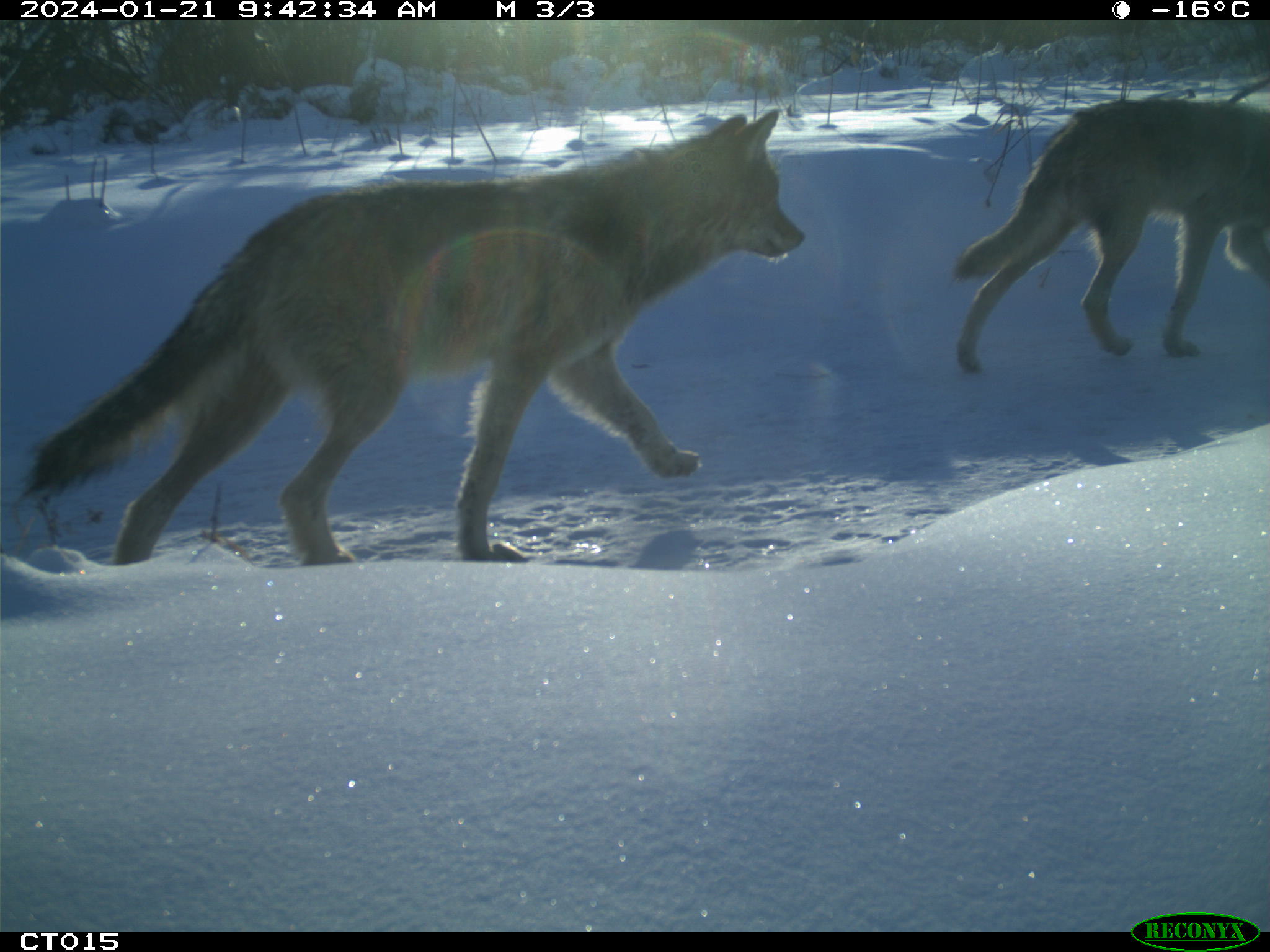

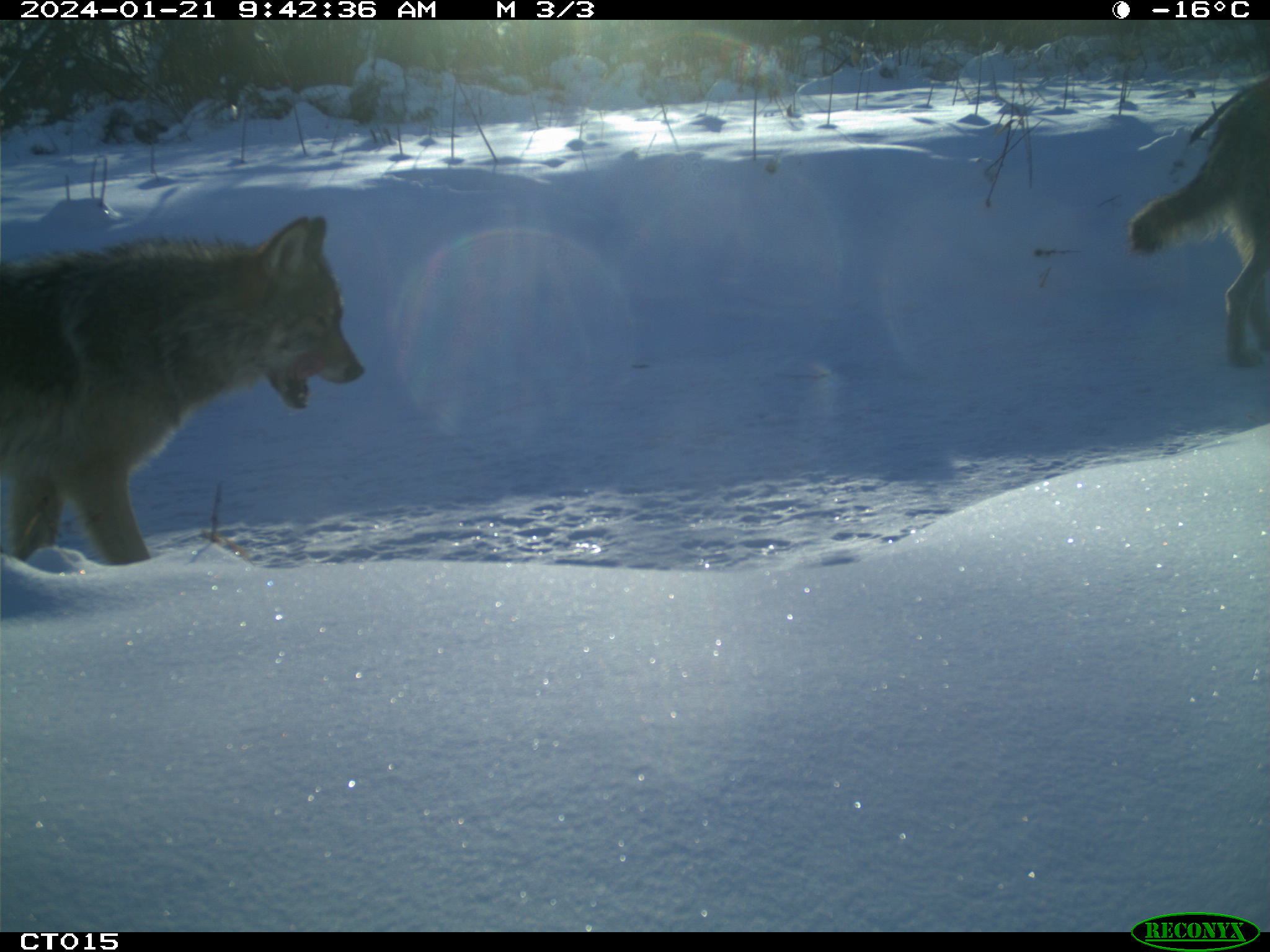
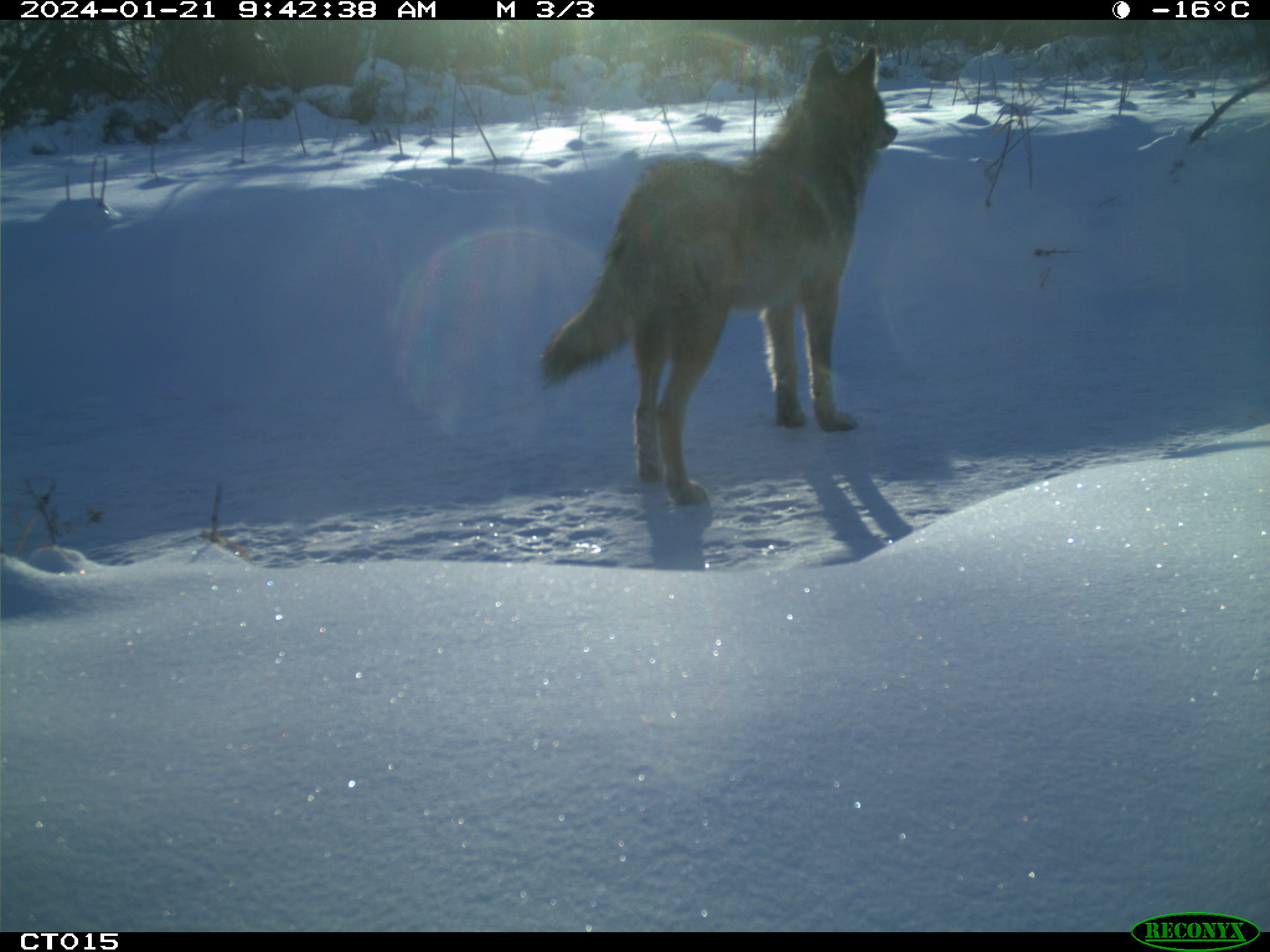
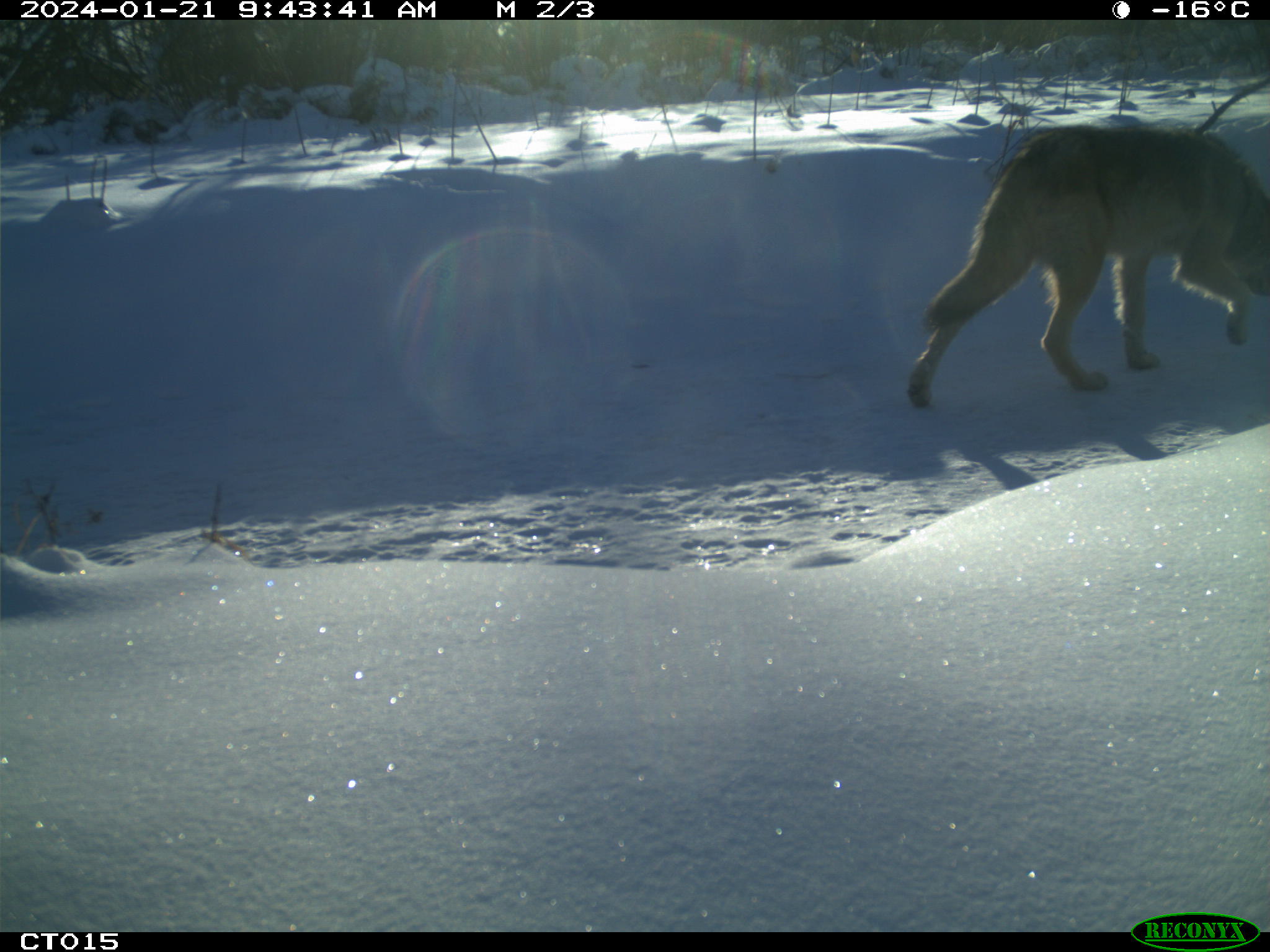

On 1/21/2024 a series of eight photos taken within 1 minute of each other shows five individual wolves traveling together. In Wisconsin, wolves typicaly breed in late winter and females deliver pups two months later. Pack numbers peak at about six to ten wolves during the summer, consisting of a breeding pair, offspring from the previous year, and the current litter. Mortality and dispersal lead to a gradual decline in pack numbers throughout the summer and fall, with the average pack size becoming four wolves in the winter. Breeding pairs lead packs, raise young, maintain and defend territory, and select denning sites.
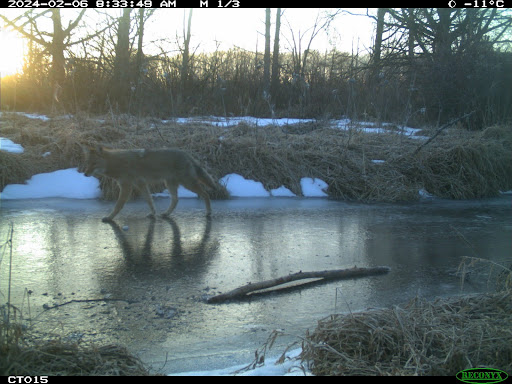
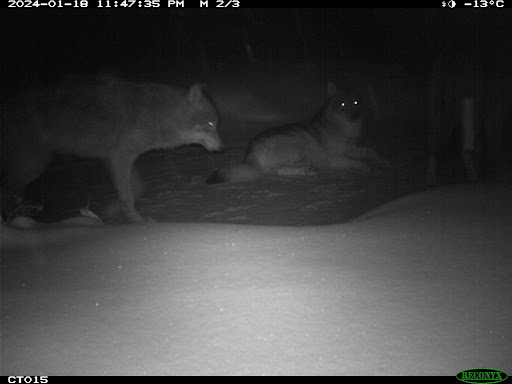
"It is important for me to gain different perspectives in my various interests, so that I can better understand their nuances. This project, more than any other, has given me experiences that have changed the way I think in all aspects of my life. The wolves' seeming unpredictability forced me to first try and understand, but eventually give in to the chaotic nature of everything around me. There are numerous lessons that we can all learn from making time to sit quietly and listen for howling." -Joey
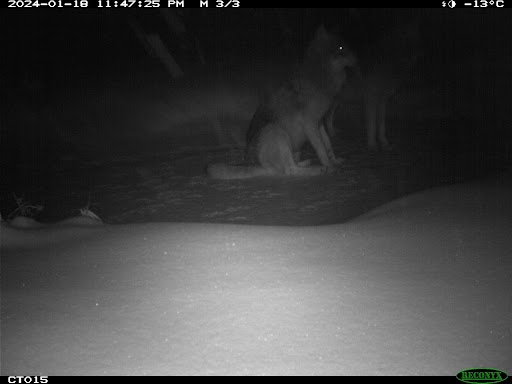
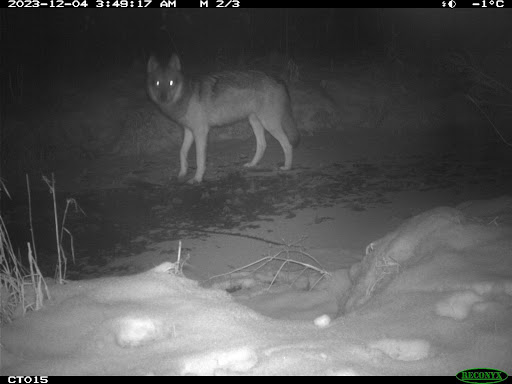
"I was initially drawn to this project because of the coexistence implications. Coexistence is an important part of conservation, and wolves are at the forefront of coexistence discussions in Wisconsin. I look forward to using this study as a coexistence model to contribute to the public debate and wolf conservation efforts." -Olivia
“As our world continues to develop and expand, conservation and coexistence with wolves becomes increasingly vital. By supporting wolf conservation efforts, we not only safeguard a keystone species but also preserve the intricate web of life upon which we all depend.” -Alex.


“My children grew up listening to the howls of the pack echoing through the tamaracks and tracking the wolves’ elusive
paw prints through the snow. The bog pack served as a conduit from my children to me. It tied us together, brought us
closer. Maybe the ultimate eco-engineer also has a talent in human psychology.” -Pat
credit: P. Clark, September 2024.
credit: A. Treves, September 2024.
Other Animals

A coyote (left) and a beaver (right). Beavers are keystone species and habitat creators. Their dams create lakes, wetlands, and canals.

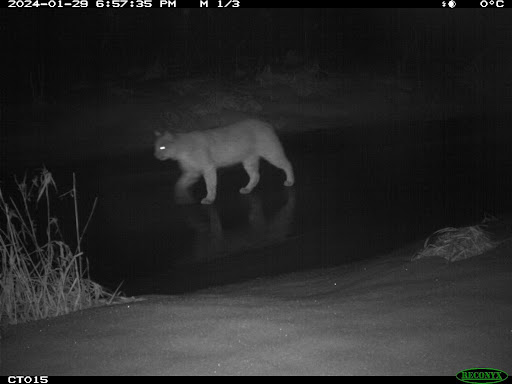
A large bobcat walking along and on a frozen stream. We assume this is a large male bobcat weighing about 40 pounds based off of tracks and trail camera pictures.

River otters alongside a stream and playing on a beaver dam. These semi-aquatic mammals can grow up to four feet long and weigh between 11 and 30 pounds.
A bald eagle perching on a beaver dam, and two sandhill cranes. The sandhill crane is one of the two crane species found in the USA.
New
See the first of our research findings: Olivia Deering's Undergraduate research Symposium poster from 2024.
And our second undergraduate independent research project by Alex Seaborg. See his poster here.